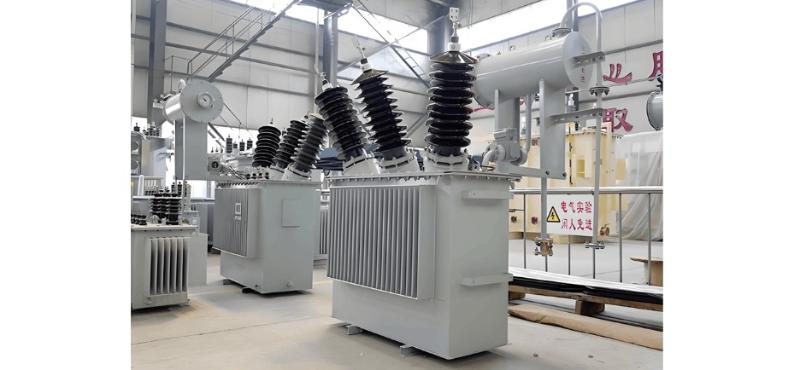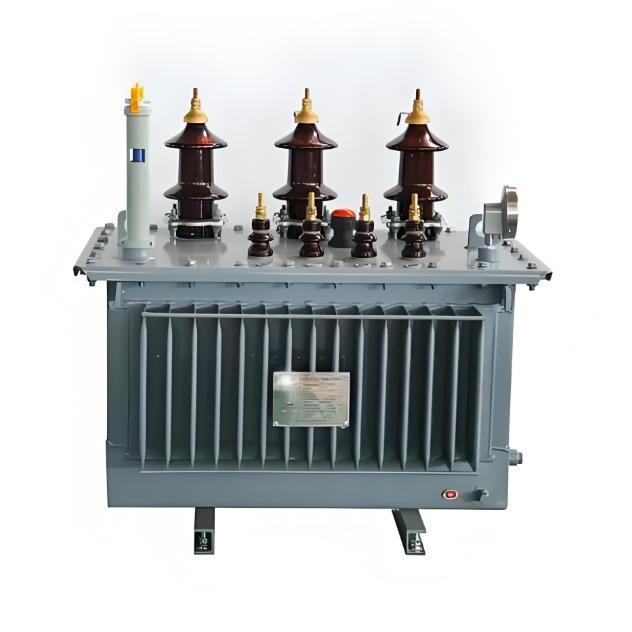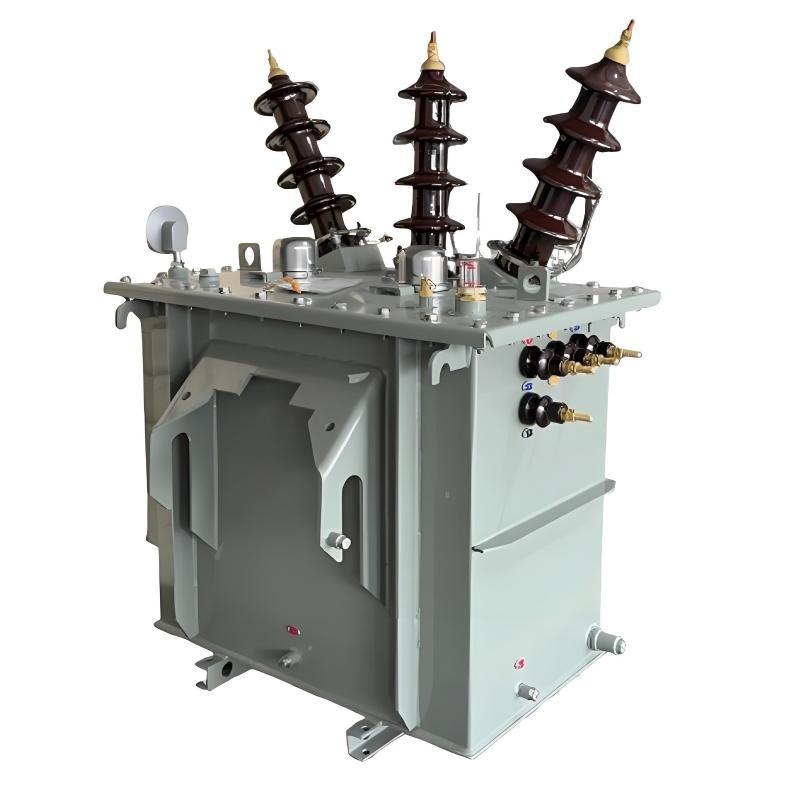1. Hőmérséklet-ellenőrző rendszer
A transzformátorok kudarcának egyik fő oka az izoláció sérülése, és az izolációnak a legnagyobb fenyegetése a tekercsek megengedett hőmérsékleti határának túllépése. Ezért a működő transzformátorok hőmérsékletének figyelése és riasztó rendszerek bevezetése alapvető fontosságú. A következő bemutatja a TTC-300 példáján a hőmérséklet-ellenőrző rendszert.
1.1 Automatikus hűtőventilátorok
Egy termisztor előre be van ágyazva a napi tekercs legmelegebb pontjában, hogy hőmérsékleti jelenségeket szerezzen. Ezek alapján a ventilátor működését automatikusan állítják. Amikor a transzformátor terhelése növekszik, a hőmérséklet is emelkedik. A termisztor reagál ezen változásra: ha a hőmérséklet eléri a 110°C-at, a ventilátor automatikusan indul el hűtés érdekében; ha a hőmérséklet alá esik a 90°C-ra, a ventilátor megkapja a hőmérsékleti jelet és leáll.
1.2 Töréspont és riasztó funkciók
PTC termisztorokat előre beágyaznak a napi tekercsbe a tekercsek és a mag hőmérsékletének figyelésére és mérésére. Ha a tekercs hőmérséklete meghaladja a 155°C-at, a rendszer overhőmérsékleti riasztó jelet aktivál. Ha a hőmérséklet felemelkedik a 170°C felett, a transzformátor már nem tud biztonságosan működni, így törésponti jelzést küldenek a másodlagos védelmi áramkörhöz, amely gyorsan válaszol a törésponti művelettel.
1.3 Hőmérséklet-megjelenítés
Termisztorokat beágyaznak a napi tekercsbe. A hőmérséklet ellenállás alapján mérik, és 4–20 mA analóg áramjelek formájában jelenítenek meg. Számítógépes csatlakozáshoz kommunikációs interfész hozzáadható, amely lehetővé teszi a távoli továbbítást akár 1200 méterig. Ezen felül, egy adottátviteli egység egyszerre akár 31 transzformátort is figyelhet. A termisztor jelzései továbbá overhőmérsékleti riasztókat és törésponti műveleteket is aktiválhatnak, ezzel tovább javítva a hőmérsékleti védelmi rendszer teljesítményét.
2. Védelmi módszerek
A burkolat kiválasztása is fontos a transzformátorok védelméhez, és ez a védelmi igényekre és használati környezetre alapul, ami eredményez különböző burkolattípusokat. Általában IP20-es burkolatot választanak a transzformátorokhoz – ez a szabványos választás elsősorban annak érdekében, hogy megakadályozza a macskák, patkányok, kígyók, madarak, valamint 12 mm-nél nagyobb átmérőjű idegen testek belépését, amelyek rövidzárlatokat vagy más komoly baleseteket okozhatnak, így védve a villamos részeket. Szabadteri transzformátorok esetén IP23-as burkolatra van szükség. Emellett a fenti funkciók mellett védi a víccseppek 60 fokon belüli, függőlegeshez képest eső esését. Ugyanakkor ez befolyásolhatja a transzformátor hőtovábbítási képességét, ezért a működési kapacitásra kell odafigyelni.

3. Hűtési módszerek
A száraz transzformátorok két fő típusát tartalmazzák: természetes levegőhűtést és kényszerített levegőhűtést. A természetes levegőhűtést főleg akkor használják, amikor a transzformátor folyamatosan a nominális kapacitásán működik. A kényszerített levegőhűtés 50%-kal növelheti a transzformátor kimeneti kapacitását. Ez a módszer főleg időnkénti terhelések vagy emergencia túlterhelések esetén alkalmazható. Azonban ilyen terhelések közben a takarófeszültség és a terhelésveszteség is természetellenesen növekszik, ami gazdaságtalan. Ezért nem ajánlott hosszú ideig túlterhelten tartani a transzformátort.
4. Túlterhelési kapacitás
A transzformátor túlterhelési kapacitása több tényezőtől függ, ezért a túlterhelési képességét megfelelően kell tervezni és használni. A következő aspektusokat kell figyelembe venni:
A transzformátor kapacitásának megfelelő csökkentése. Fontolóra vehető a rövid távú hatású túlterhelések, mint például acélgörgő berendezések és hajtóművek működése során bekövetkező túlterhelések. A transzformátor túlterhelési kapacitásának kihasználásával a kapacitást csökkenthetjük – ez hatékony módja a túlterhelési képesség kihasználásának. Különösen egyenletesen terhelt területeken, mint például lakossági közvilágítás, szórakoztató és kulturális létesítmények, klímaberendezések, és bevásárlóközpontok, a transzformátor túlterhelési kapacitását kihasználva a kapacitást megfelelően csökkenthetjük, hogy a transzformátor teljes terhelésen vagy időnkénti túlterhelésben működhessen a csúcsműködési időszakban.
Tartalék kapacitás vagy egységek számának csökkentése: Néhány helyen a transzformátorok magas redundanciaigényei miatt túlzottan nagy és sok egységet választanak a mérnöki tervezésben. A száraz transzformátorok túlterhelési képességének kihasználásával a tartalék kapacitást tervezési szinten csökkenthetjük. A tartalék egységek számát is csökkenthetjük. Ha a transzformátor túlterhelésben működik, szorosan figyelembe kell venni a működési hőmérsékletét. Ha a hőmérséklet 155°C-re emelkedik (riasszal), azonnal terhelés-csökkentő intézkedéseket (pl. nem kritikus terhelések leválasztása) kell tennie, hogy biztosítsa a kritikus terhelések biztonságos ellátását.
5. Száraz transzformátorok alacsony-feszültségű kimeneti módjai és interfészkoordináció
A száraz transzformátorok nem tartalmaznak olajot, így kiküszöbölve a tűz, robbanás vagy szennyezés kockázatát. Ennek eredményeként az elektromos szabályzatok és szabályzatok nem követelik meg, hogy külön szobában legyenek telepítve. Különösen az újabb SC(B)9 sorozat esetén, ahol jelentősen csökkentek a veszteségek és zajszintek, már lehetséges a száraz transzformátorokat a napi panelekkel ugyanazon a szerepkörben elhelyezni.
5.1 Szabványos zárt buszlemez
Ha a projekt zárt buszlemezeket (más néven beilleszthető vagy kompakt buszlecsábakat) használ, a megfelelő transzformátor szabványos zárt buszlemez-kapcsolókat kaphat, amelyekkel könnyen csatlakoztatható a külső buszlemezekhez. A burkolattal (IP20) ellátott termékek esetén a burkolat fedőjén található a zárt buszlemez flange. Burkolat nélküli (IP00) termékek esetén csak a buszlemez-kapcsolók vannak biztosítva.
5.2 Szabványos vízszintes oldalsó kijárat (alacsony feszültség)
Amikor a transzformátor oldalról áll a napi panel mellett, vízszintes oldalsó kijáratokat biztosíthatnak a transzformátoron, hogy kényelmesen csatlakoztatható legyenek a terminálok. Ez a konfiguráció tipikusan GGD, GCK, és MNS napi panelekkel egyeztetett. A transzformátor gyártó és a vezérlőgép gyártó koordinációs megállapodást kell kötnie, hogy megerősítse a részletes interfész méreteket, és biztosítsa a sima helyi telepítést.
5.3 Szabványos függőleges oldalsó kijárat (alacsony feszültség)
Ez az oldalsó kijárat függőleges buszlemezeket használ, és alapelveiben hasonló a vízszintes oldalsó kijáraton. Amikor a transzformátor Domino-stílusú, függőlegesen elrendezett vezérlőgép panelekből álló rendszerekkel használható, a transzformátor napi oldalsó kijáratokat biztosíthat.
Kínában a rezinszilizált anyagokból készült száraz transzformátorok nagyon magas termelési szintet értek el, és most globálisan is jelentős pozíciót foglalnak el, a termelés és a forgalom világszinten az első helyen áll. A vezető gyártási technológia is lenyűgöző. Ezek transzformátorok alkalmazása és technológiai előmozdítása nagyon ígéretes jövőt nyit, mivel hosszú távú fejlesztési potenciál van a gyártásban. A főbb előnyök a következők:
Alacsony energiafogyasztás és alacsony zajszint: Alacsonyabb szilíciumvaslapveszteségek, a foliatekercsek szerkezeti előnyei, a lépcsős magok szélsőbb összekötése a hagyományos tervezéshez képest – mind hozzájárul a száraz transzformátorok integrált tervezésének környezetbarátabbá tételéhez. Ezek technológiák mélyebb előmozdítása, kombinálva az alacsony zajszinttel és az új technológiák és folyamatok beillesztésével, a jövőbeli transzformátorok még csendesebbek, környezetbarábbak és energiatakarékábbak lesznek.
Magas megbízhatóság: A termékek megbízhatósága és minősége a fogyasztók kulcsfontosságú aggodalma lett. Minden gyártási folyamat kutatásán keresztül a transzformátorok megbízhatóságát ellenőrizték és tovább fejlesztették, ami hozzájárult a hosszabb élettartamhoz és a megbízhatóság javításához. Ez különösen a mérnöki alapkutatásban látszik.
Környezeti tanúsítás: A legfontosabb környezeti szabvány a HD464. Kutatásokat és tanúsításokat végeznek a C0/C1/C2 éghajlati ellenállási osztályok, az E0/E1/E2 környezeti ellenállási osztályok, és az F0/F1/F2 tűzellenállási osztályok terén.
Növekvő kapacitás: A száraz transzformátorok főként elosztó transzformátorokként használják, 50 kVA-tól 2500 kVA-ig. A használatuk most kiterjed a távfeszültség-transzformátorok területére, 10000 kVA-tól 20000 kVA-ig. Ez a városi villamosenergia-igény növekedéséből és a hálózati hálózatok kibővüléséből ered, ami több városi terhelési központot és nagy kapacitású távfeszültség-transzformátorok szélesebb elfogadását eredményezi.
Teljes körű funkciók: A modern transzformátorok szerkezetileg védő burkolattal, kényszerített hűtéssel, hőmérséklet-figyelő interfészekkel, mérést transzformátorokkal, energiamérési eszközökkel stb. rendelkeznek. A transzformátorok fejlesztése teljesen integrált funkcionális tervezés felé halad.
Kiterjedt alkalmazási területek: A terület, amelyet a száraz transzformátorok dominálják, kiterjed több területre és nagy platform alkalmazásokra.























